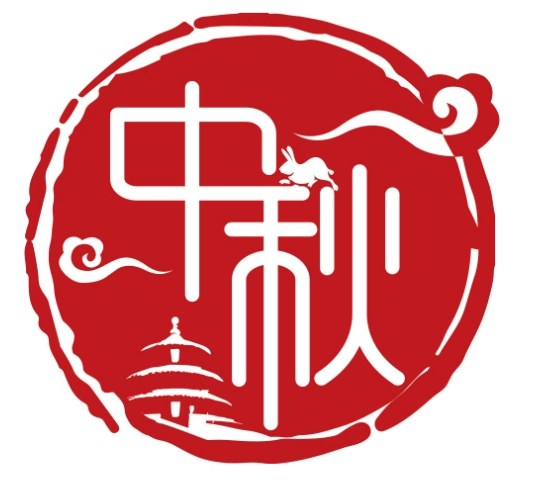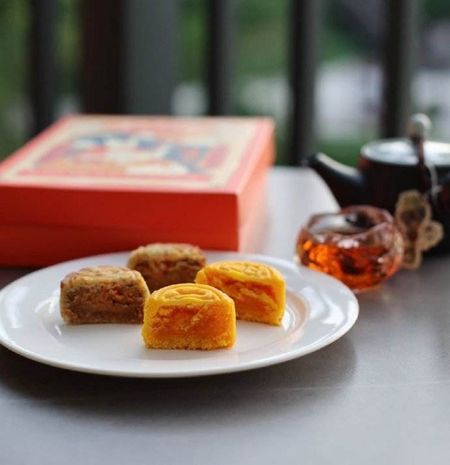The Mid-Autumn Festival is one of the four traditional festivals in China. It originated from ancient times, was popularized in the Han Dynasty, and was finalized in the Tang Dynasty. It is a synthesis of autumn age-appropriate customs, and most of the festival factors contained in it have ancient origins. As one of the important rituals and customs of folk festivals, worshiping the moon has gradually evolved into activities such as viewing the moon and singing the moon. The Mid-Autumn Festival uses the full moon to signify the reunion of people, as a sustenance to miss the hometown, miss the love of relatives, pray for a good harvest and happiness, and become a colorful and precious cultural heritage.

Origin of Mid-Autumn Festival
The origin of the Mid-Autumn Festival is inseparable from the moon. The Mid-Autumn Festival is the relic of the ancient celestial phenomenon worship – the custom of respecting the moon. During the autumn equinox, it is the ancient “Sacrificial Moon Festival”. Sacrificing the moon is a very ancient custom in our country. The Mid-Autumn Festival comes from the traditional “autumn equinox”. In traditional culture, the moon is the same as the sun, and these two alternate celestial bodies have become the objects of worship of the ancestors. The Mid-Autumn Festival originated from the ancient people’s sacrifice to the moon, and it is the relic and derivative of the Chinese people’s custom of worshiping the moon. The Mid-Autumn Festival is a synthesis of autumn seasonal customs, and most of the festival and customs elements it contains have ancient origins.
Development of Mid-Autumn Festival
The Mid-Autumn Festival originated from the worship of celestial phenomena, and evolved from the Qiu Xi festival in ancient times. Sacrificing the moon is a very ancient custom in China. It is a worship activity for the “moon god” by the ancients in some parts of ancient China. In the autumn equinox of the twenty-four solar terms, it is the ancient “Sacrificial Moon Festival”. The Mid-Autumn Festival comes from the traditional “autumn equinox”. In the ancient farming society, the ancients believed that the movement of the moon had a lot to do with agricultural production and seasonal changes, so worshiping the moon became an important sacrificial activity. As one of the important rituals and customs of folk festivals, worshiping the moon has gradually evolved into activities such as viewing the moon and singing the moon.
The Mid-Autumn Festival was popularized in the Han Dynasty. The Han Dynasty was a period of economic and cultural exchange and integration in the north and south of China. The extant written records of the term “Mid-Autumn Festival” were first found in documents of the Han Dynasty. It was written in the “Zhou Li” between the two Han Dynasties (the legend was written by Zhou Gongdan, and it was actually written between the two Han Dynasties), saying that in the pre-Qin period, there was a “Mid-autumn night to welcome the cold”. “, “Mid-Autumn Festival offer good fur”, “autumn equinox evening moon (worship the moon)” activities. According to records, in the Han Dynasty, there were activities to honor the elderly and provide them with majestic cakes on the Mid-Autumn Festival or the beginning of the autumn. During the Jin Dynasty, there were also written records of the Mid-Autumn Festival Moon Appreciation Act, but it was not very common. Before the Jin Dynasty, the Mid-Autumn Festival was not popular in northern China.
During the Tang Dynasty, the custom of Mid-Autumn Festival was popular in northern China. In the Tang Dynasty, the Mid-Autumn Festival became an officially recognized national festival. “Book of Tang Taizong Ji” records that “the Mid-Autumn Festival on August 15th”. The custom of appreciating the moon during the Mid-Autumn Festival was very popular in the Chang’an area of the Tang Dynasty. Many poets have poems about the moon in their famous works. The Mid-autumn Festival is combined with mythological stories such as Chang’e flying to the moon, Wu Gang cutting Gui, jade rabbit pounding medicine, Yang Guifei’s transformation into the moon god, and Tang and Minghuang’s visit to the moon palace, making it full of romance, and the wind of playing with the moon has just flourished. The Tang Dynasty was an important period in which traditional festival customs were combined and finalized, and the main part of it has been passed down to this day.
Mid-Autumn Festival Customs
Sacrificing to the Moon (Moon Worship)
Sacrificing the moon is a very ancient custom in China. It is actually a worship activity for the “moon god” by the ancients. In ancient times, there was a custom of “autumn evening and evening moon”. On the evening of the moon, worship the moon god. Since ancient times, in some areas of Guangdong, people have the custom of worshipping the moon god (worshipping the moon goddess, worshipping the moonlight) on the night of the Mid-Autumn Festival. To worship the moon, set up a big incense table, and put moon cakes, watermelons, apples, red dates, plums, grapes and other offerings. Under the moon, place the “Moon God” tablet in the direction of the moon, the red candle burns high, and the whole family worships the moon in turn to pray for blessings. Offering sacrifices to the moon and admiring the moon, entrusting the moon in memory, expressing people’s best wishes. As one of the important rituals of the Mid-Autumn Festival, worshipping the moon has continued from ancient times to the present, and has gradually evolved into folk activities to appreciate the moon and praise the moon.
Lights
On the night of the Mid-Autumn Festival, there is a custom of lighting lanterns to help the moonlight. Today, there is still the custom of using tiles to stack towers on the towers to light lanterns. In the south of the Yangtze River, there is a custom of making light boats. The custom of lighting lanterns during the Mid-Autumn Festival is even more popular in modern times. Today’s Zhou Yunjin and He Xiangfei said in their article “Let’s Talk about Seasonal Events”: “Guangdong has the most prosperous lanterns. Ten days before the festival, each family uses bamboo strips to make lanterns. And the words ‘Celebrating the Mid-Autumn Festival’, etc., painted with various colors on the paste-colored paper. The inner burning candle of the Mid-Autumn Night Light is tied to a bamboo pole with a rope, erected high on the eaves or on the terrace, or built with small lamps into glyphs or various shapes, hanging At the height of the house, it is commonly known as ‘the tree mid-autumn’ or ‘the vertical mid-autumn festival’. The lanterns hung in the rich and noble homes can be several feet high. You can also enjoy yourself. The lights in the city are like a world of colored glass.” The custom of burning lanterns in the Mid-Autumn Festival seems to be second only to the Lantern Festival.
Moon View
The custom of appreciating the moon comes from offering sacrifices to the moon, and serious sacrifices have turned into relaxed entertainment. It is said that the moon is the closest to the earth on this night, and the moon is the largest, roundest and brightest, so there has been the custom of feasting and enjoying the moon since ancient times. In ancient times, the customs of the North and the South were different, and the customs were different in different places. The written records of the Mid-Autumn Festival Moon Appreciation activities appeared in the Wei and Jin Dynasties, but they did not become a custom. In the Tang Dynasty, viewing the moon and playing with the moon during the Mid-Autumn Festival were quite popular. Many famous ancient Chinese poets have poems about the moon in their famous poems.
Eat mooncakes
